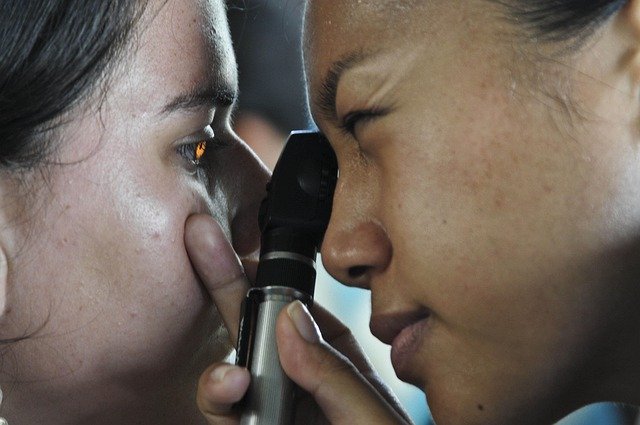5 Signs of Liver Cirrhosis That Might Help in Early Detection
Liver cirrhosis represents one of the most serious forms of liver disease, affecting millions of Americans each year. This progressive condition develops when healthy liver tissue becomes replaced by scar tissue, significantly impairing the liver's ability to function properly. Understanding the early warning signs can be crucial for timely intervention and potentially life-saving treatment.

What is liver cirrhosis and how does it develop?
Liver cirrhosis is a late-stage liver disease characterized by the replacement of healthy liver tissue with permanent scar tissue. This scarring occurs gradually over months or years as the liver attempts to repair damage caused by various factors including chronic alcohol abuse, hepatitis B and C infections, fatty liver disease, and certain genetic disorders.
The liver’s remarkable ability to regenerate becomes overwhelmed when damage occurs faster than repair. As scar tissue accumulates, it blocks blood flow through the liver and prevents the organ from performing essential functions like filtering toxins, producing proteins, and metabolizing nutrients. Once cirrhosis develops, the damage is typically irreversible, making early detection absolutely critical.
What are the 5 early liver cirrhosis signs to watch for?
The first early sign is persistent fatigue and weakness that doesn’t improve with rest. This occurs because the compromised liver cannot effectively process nutrients and remove toxins, leaving the body struggling to maintain normal energy levels.
The second warning sign involves changes in appetite and unexplained weight loss. Many people with developing cirrhosis experience nausea, loss of appetite, and gradual weight reduction as their liver becomes less efficient at processing food and producing digestive enzymes.
Abdominal swelling and discomfort represent the third crucial sign. This occurs due to fluid accumulation (ascites) as the scarred liver struggles to produce adequate amounts of albumin, a protein that helps maintain proper fluid balance in the body.
The fourth sign includes skin and eye color changes, particularly a yellowish tint known as jaundice. This happens when the damaged liver cannot properly process bilirubin, a waste product from broken-down red blood cells.
The fifth early indicator involves changes in mental clarity and concentration. As toxins build up in the bloodstream due to impaired liver function, many people experience confusion, memory problems, and difficulty focusing on tasks.
When to visit a doctor for liver concerns?
Seeking medical attention becomes essential when experiencing any combination of the aforementioned symptoms, especially if they persist for more than a few weeks. Additionally, individuals with risk factors such as chronic alcohol use, viral hepatitis, diabetes, or a family history of liver disease should maintain regular check-ups with healthcare providers.
Emergency medical care is necessary if symptoms include severe abdominal pain, vomiting blood, black or bloody stools, extreme confusion, or difficulty breathing. These signs may indicate serious complications requiring immediate intervention.
How is liver cirrhosis diagnosed and treated?
Healthcare providers use various diagnostic tools including blood tests, imaging studies like ultrasounds or CT scans, and sometimes liver biopsies to confirm cirrhosis. Blood tests can reveal elevated liver enzymes, decreased protein levels, and other markers indicating liver dysfunction.
Treatment approaches focus on slowing disease progression, managing symptoms, and preventing complications. This may include medications to treat underlying causes like hepatitis, dietary modifications, alcohol cessation programs, and regular monitoring for complications such as liver cancer or portal hypertension.
What makes liver cirrhosis treatment unique in America?
The United States offers comprehensive liver cirrhosis treatment through specialized hepatology centers and transplant programs nationwide. American medical facilities provide access to cutting-edge treatments including direct-acting antiviral medications for hepatitis C, advanced imaging technologies, and sophisticated liver transplant programs.
The country’s healthcare system emphasizes multidisciplinary care teams including hepatologists, transplant surgeons, nutritionists, and social workers who collaborate to provide comprehensive patient care. Additionally, ongoing clinical trials throughout the United States offer patients access to experimental treatments and promising new therapies for liver disease.
What are the costs associated with liver cirrhosis treatment?
Liver cirrhosis treatment costs vary significantly depending on disease severity, treatment location, and insurance coverage. Early-stage management including regular monitoring and medication typically ranges from $2,000 to $5,000 annually, while advanced care requiring hospitalization can reach $15,000 to $30,000 per episode.
| Treatment Type | Provider Example | Cost Estimation |
|---|---|---|
| Initial consultation and testing | Mayo Clinic, Cleveland Clinic | $800-$1,500 |
| Ongoing medical management | Local hepatology practices | $2,000-$5,000 annually |
| Advanced treatments and procedures | Academic medical centers | $10,000-$25,000 per procedure |
| Liver transplant evaluation and surgery | UCSF, Johns Hopkins | $300,000-$500,000 total |
Prices, rates, or cost estimates mentioned in this article are based on the latest available information but may change over time. Independent research is advised before making financial decisions.
Conclusion
Recognizing the early signs of liver cirrhosis can significantly impact treatment outcomes and quality of life. While the condition represents a serious health challenge, early detection combined with appropriate medical care can help slow progression and manage symptoms effectively. Anyone experiencing potential warning signs should consult with healthcare professionals promptly to explore diagnostic options and develop appropriate treatment plans tailored to their specific circumstances.
This article is for informational purposes only and should not be considered medical advice. Please consult a qualified healthcare professional for personalized guidance and treatment.




